Life is a little uneven at present, with all the work going on inside and out to make the house habitable over the next winter. Summer is proving to be a delight as the new solar panels reduce my bills to pence rather than pounds and caused one app to consider itself broken because it could find no grid data to report!
My main priority, given the projected disturbances of foil panelling inside the house, and loft insulation which will involve some debris collection some time later, has been the essay because that happens in the main area of the house. Art work happens in the studio which is not and so is less vulnerable to comings and goings, of which there will be many this week.
With not a clue, and looking at an OCA colleague’s work using acetates (thank you Catherine Levey), I was reminded of the mono prints we did much earlier in the course, using photos or magazine images as the base. As usual, I had done this my way, not having the option of presses or leaving wet materials around, and so what I reaclled was painting on an acetate taped over an image, then printing that onto a clean sheet of paper.
So here we are. This uses a painting of a cat by Gwen John (1876-1936). I’ve used oils on acetate and printed the product onto cartridge paper.
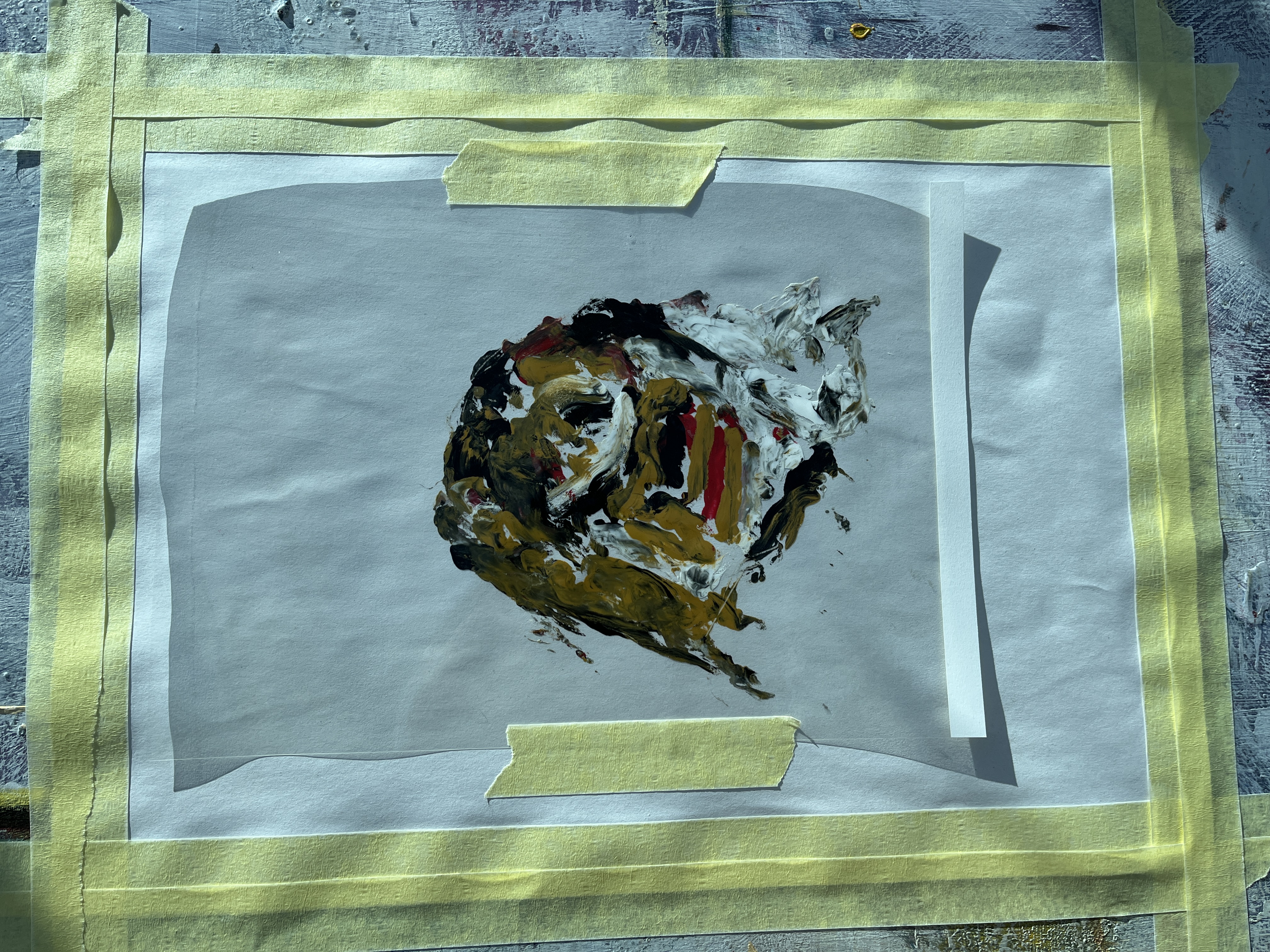

There are some interesting patterns coming from what is John’s sleeping tabby cat. Her painting is largely brown, black, white, and merged tones; mine uses those tones with the addition of some streak of red which often lurks somewhere in the genes of a tabby. The next step, as I recall, is to paint into it.
Three hours and two layers of over-worked oily mess later, I put it out of its misery It was a nice idea though, so I’ll try it again. I think I need to make the first print onto acetate so that the print onto paper comes out the right way round. I find it really difficult to reverse images mentally under ideal conditions, and on the fly is almost impossible. There is some psychological research, no longer valid for reasons I’ll mention, that showed boys/men to be good at mental rotation of figures and girls/women poor (eg Cimadevilla and Piccardi, 2020), with the reverse being true for facial expression where girls came out better at identifying emotions from images of eyes (e.g. Schiffer et al, 2013). Setting the second finding aside, I suspect these stats only held true for girls/women brought up without the benefits of the constructional toys boys were given. That was certainly true of my contemporaries – all of us given passive toys such as dolls and doll houses while the boys had hammers, tractors, tanks, things you could make into other things and things you could take apart and put back together again. There was no Lego at that time so the only things in the round girls were likely to make were paper chains for christmas decorations.
31st May. I’ve taken a more careful approch to this by outlining tonal areas on a print of the target image in biro so they’re easier to see as blocks through the acetate, then euqlly carefully filled these in like painting by numbers, using similarly toned very dilute oils.
This is the acetate in place on top of the cartridge, pressed into the support using a flannel. I don’t have much of an idea how long to leave it there so I’ll use the ‘finish mug of coffee’ metric which will give it around six minutes. I quite like what I see here, especially as the cat’s head is quite ambiguous in its aspect.

Well how about this? There but not quite there which is cats all over, unless they’re on your knee and you need to move. Bright sun so even the paper has tiny shadows!





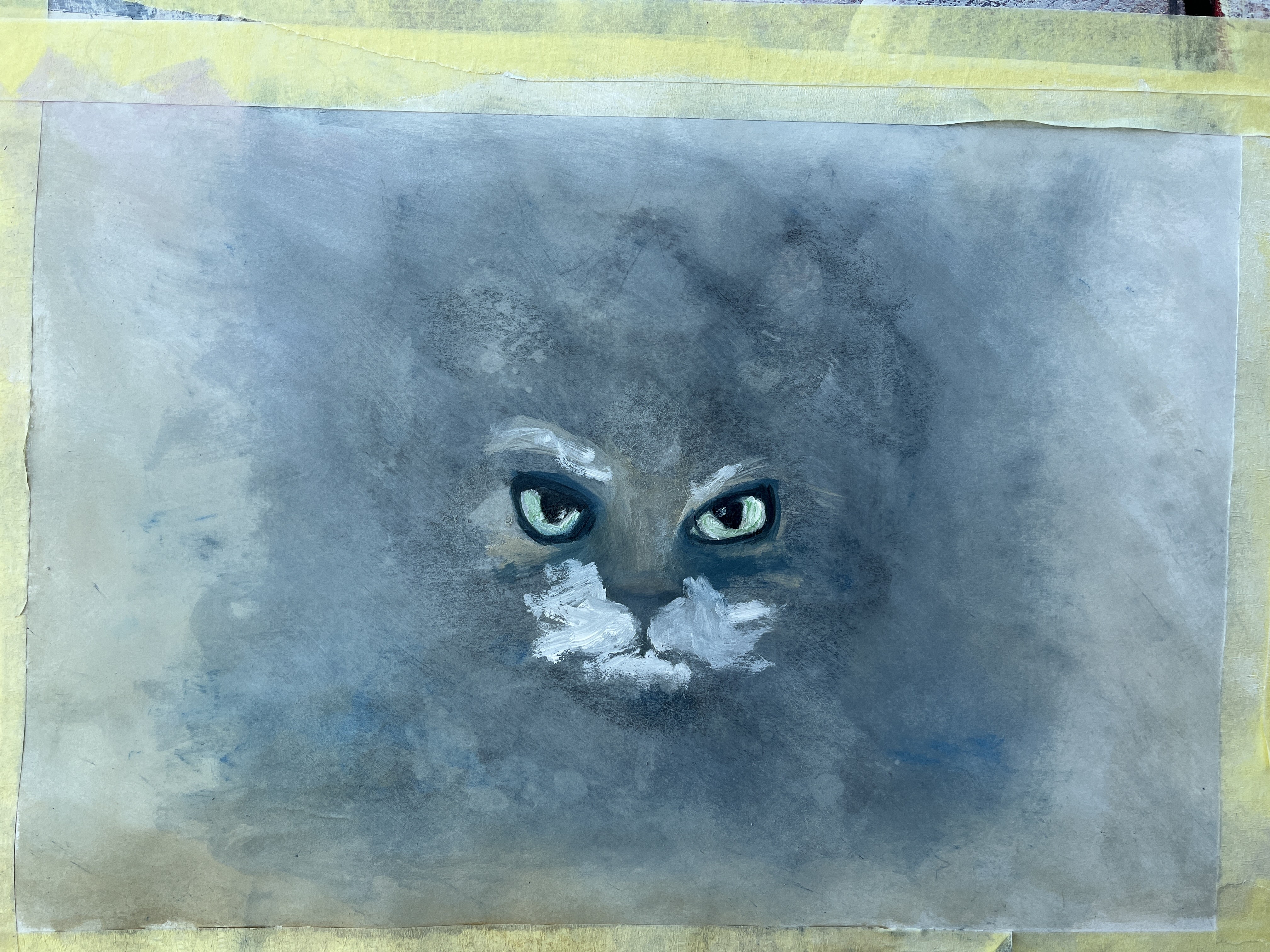
Dall-ee Cat. Might mute the white whisker barrels tomorrow.



The print transferred very little paint so I beefed up the load for a second aplication and that came out rather better. I rather like emphasising small selcted areas, especially the eyes, and did so with this print. The first painting has no post-print embellishment because it looked good enough (to me) as it was, and there was no face evident which might have changed the decision. The second was definitely desperation but this time I think maybe I’m getting the hang of the idea and what I want from it.

I’ll try some more tomorrow with this revised feel in mind for what I’m doing.
1st June 2023.

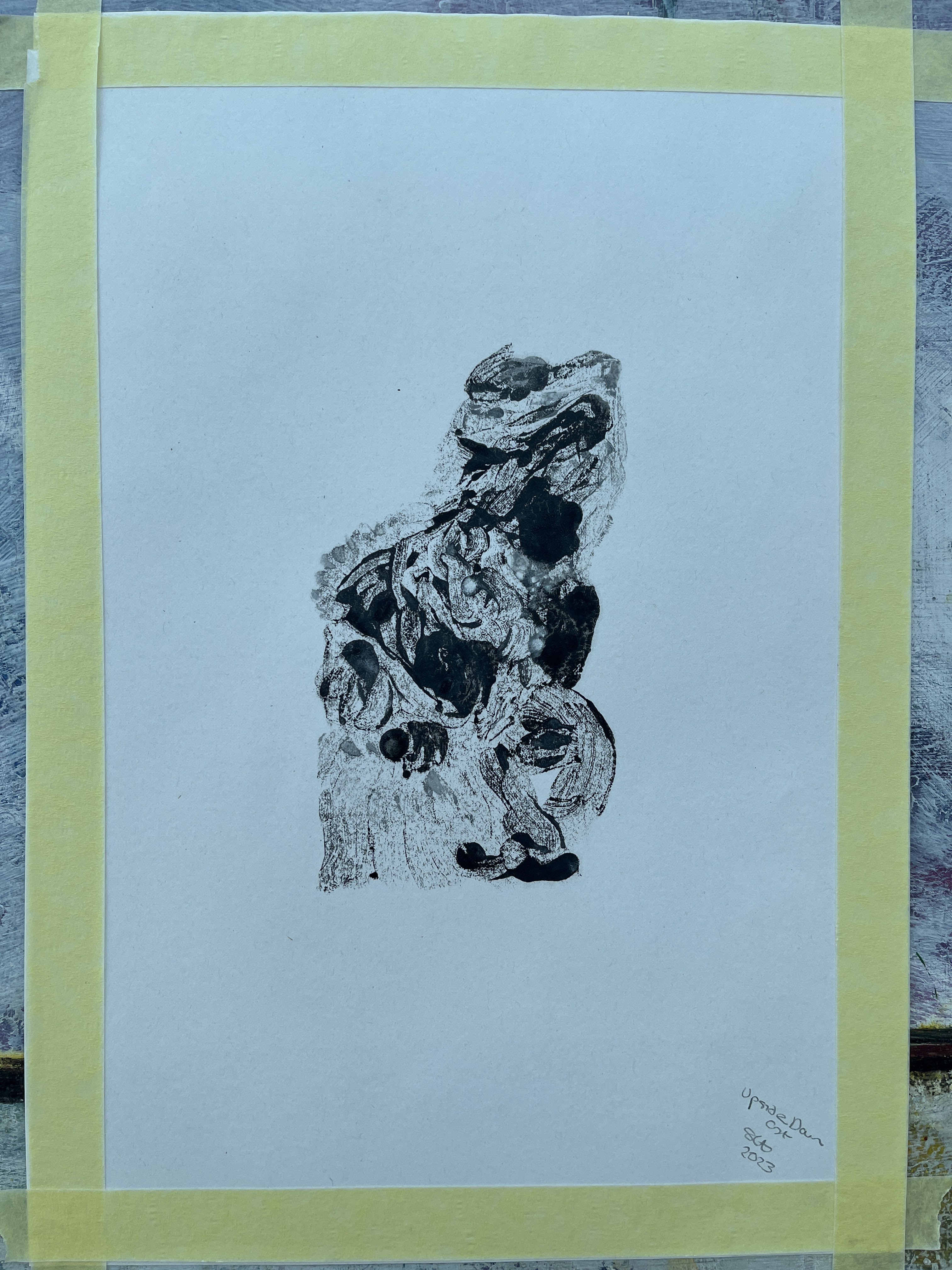
Yael Cat. From my pastel painting of an acryic by Yael Maimon who paints, draws and rescues cats.



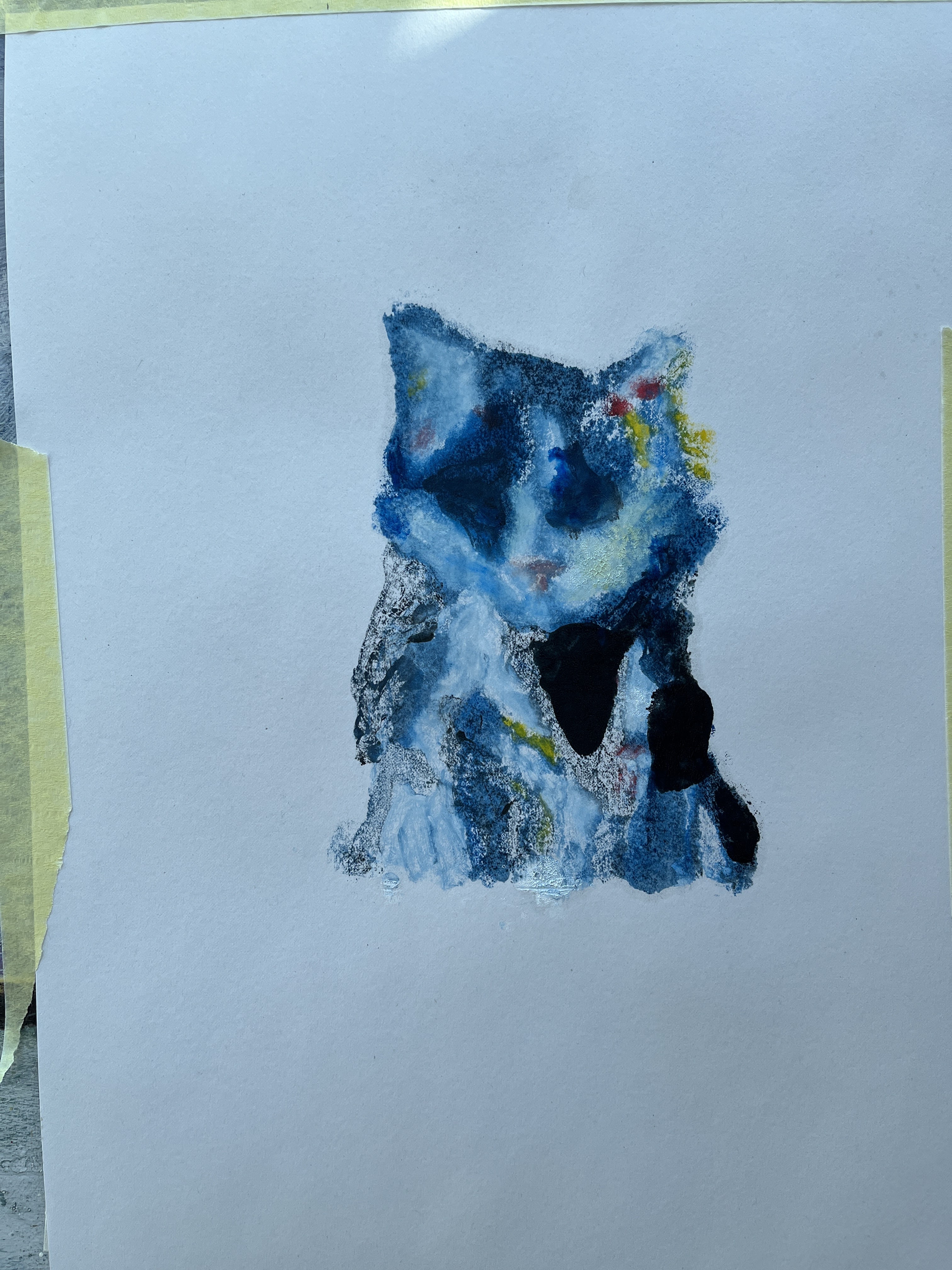

Tried eyes.
Twice.
Third time is probably where I need to stop.
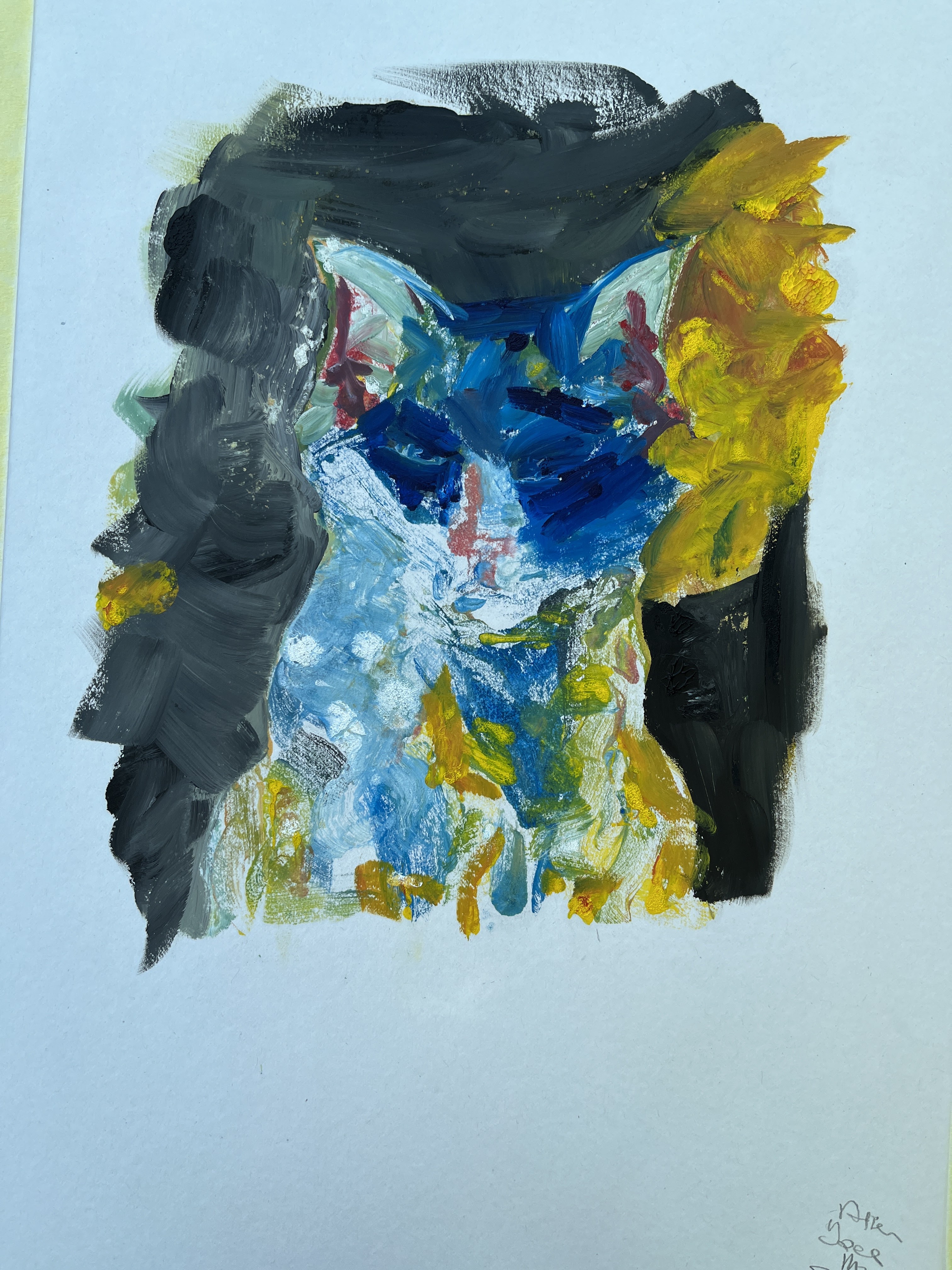
I don’t have the hang of this but what’s clear is that less is definitely more unless there’s nothing of the print at all. But of all of these, the shouting cat has probably worked best for me and it includes a very simple print component followed by a very detailed hand-painted element, the result of which seems lamost surreal.
SCH
For a list of workshops, groups, conversations, and other activities see my dedicated page.
Cimadevilla, J. M., and Piccardi, L., (2020). Spatial Skills. Handbook of Clinical Neurology, 175 pp 65–79.
Schiffer B, Pawliczek C, Müller BW, Gizewski ER, Walter H (2013) Why Don’t Men Understand Women? Altered Neural Networks for Reading the Language of Male and Female Eyes. PLoS ONE 8(4): e60278.
